At the End of the Game You Will Be Forgotten

At the End of the Game You Will Be Forgotten
April 19 - May 20, 2018
Alyssa Davis Gallery
André Magaña, Bea Fremderman, Georgia Horgan, Ficus Interfaith, Isabelle Frances McGuire, Adam Shiu-Yang Shaw, Fin Simonetti, Loney Abrams & Johnny Stanish, Anna Zett
Consider a digsite. Digging is always a vertical movement, down into the archaeological matrix. Each layer, defined as a unit of sedimentation greater than one centimeter thick, is separated from previous layers by an event. A fire, a flood. These intervals are discrete changes in the character of the material being deposited.
Esther Leslie argues that excavation is an ‘inverted’ astrology. “Astrologers study the forces and influences of the stars,” she writes, while excavators discover “the manifold properties of earth and stone strata.” Geology is regarded as nature’s writing, a cipher language. “The language of our world is reflected in the underworld, if subject to decoding.” 1
What time is it?
All possible histories are encoded in the strata. A temple column supports a basilica’s nave; broken palaces find their way into household walls. A fine intaglio is encrusted with black accretions and dusted with so many layers of silt and sand that it becomes a pebble. At the digsite, such actors, both artifactual and ecofactual, must be coaxed into speaking.
The thickness of an event, and the earth in which it is held; an open shaft; the patina of an old chair; the carbon cycle. Nothing is new, and nothing is not new.
1. Leslie, Esther. Synthetic Worlds: Nature, Art and the Chemical Industry. London: Reaktion Books/Univ. Chicago Press, 2007. 38-39.
Press:
Tzvetnik
OFluxo
Artforum
Earth Sciences
AQNB
Art Viewer




 CAPITANES, 2018
CAPITANES, 2018André Magaña
Nylon PLA, body filler, enamel, Spirulina
12 x 20 x 15 in
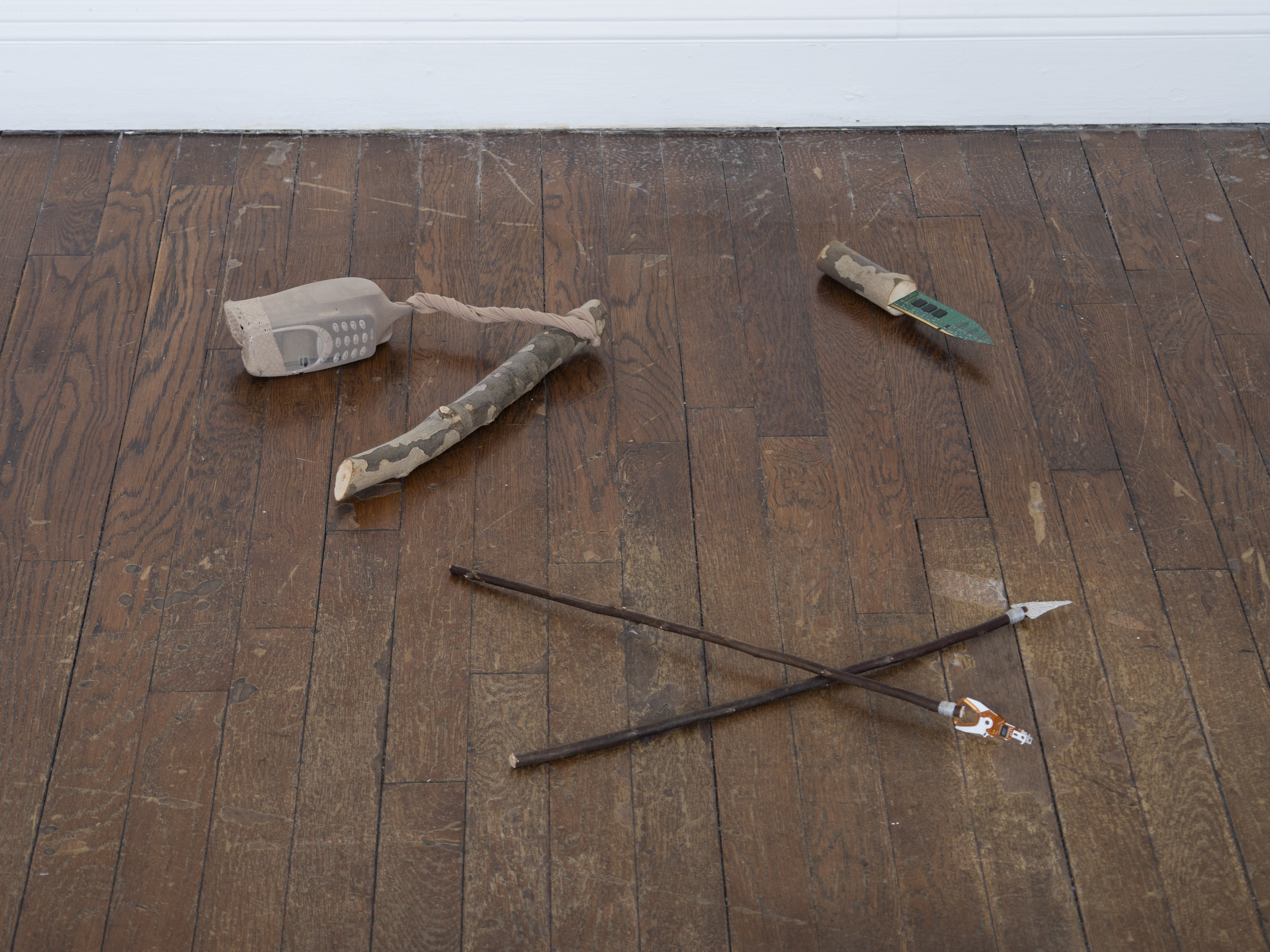 Untitled, 2018
Untitled, 2018Bea Fremderman
Cell phones, pantyhose, found wood
Dimensions variable
Untitled, 2018
Bea Fremderman
Electronic scrap, found wood
Dimensions variable
Untitled, 2018
Bea Fremderman
Electronic scrap, tin can, artist debit card, dental floss, plumbing accessory
Dimensions variable
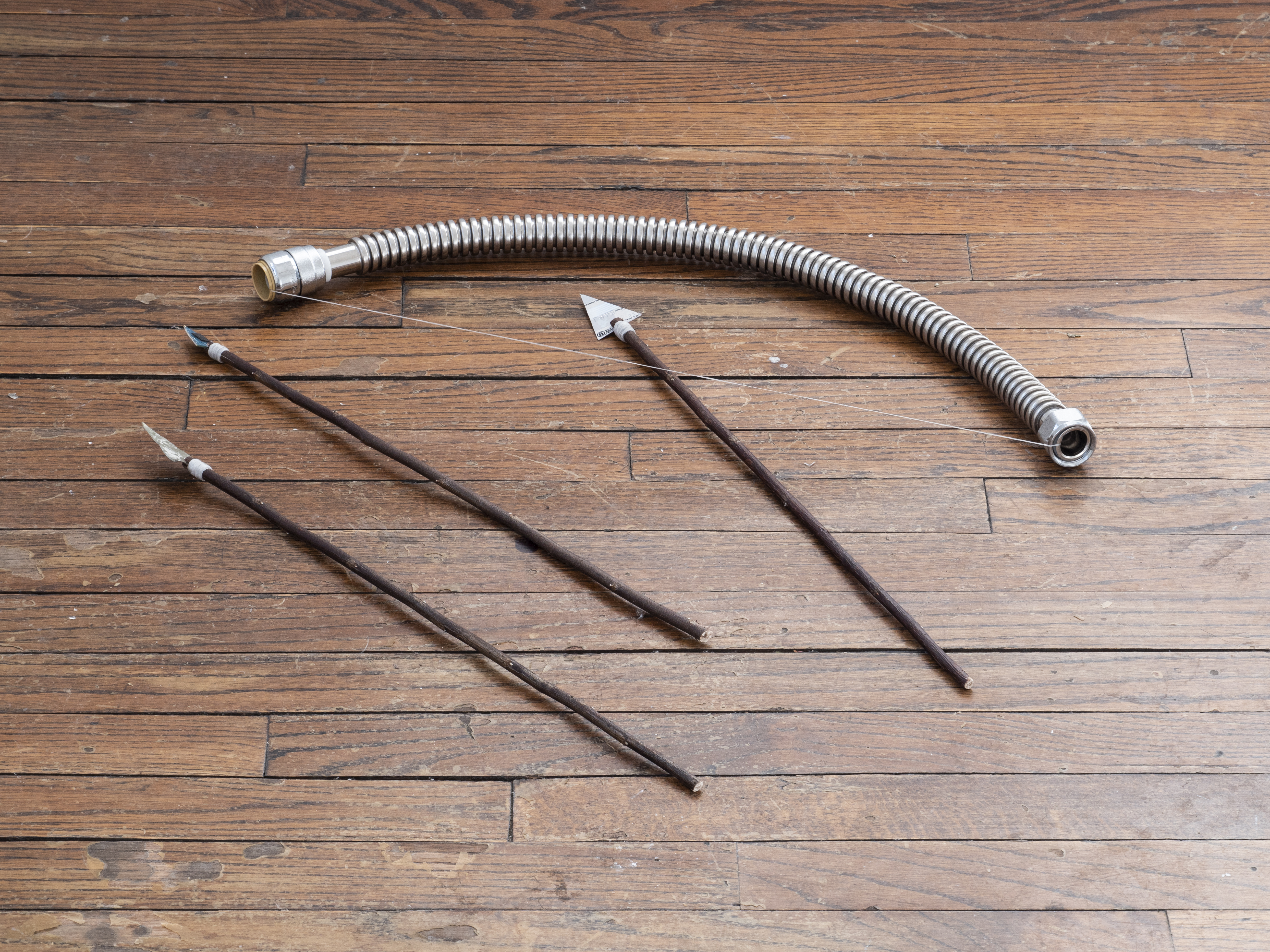 Untitled, 2018
Untitled, 2018Bea Fremderman
Electronic scrap, tin can, artist debit card, dental floss, plumbing accessory
Dimensions variable
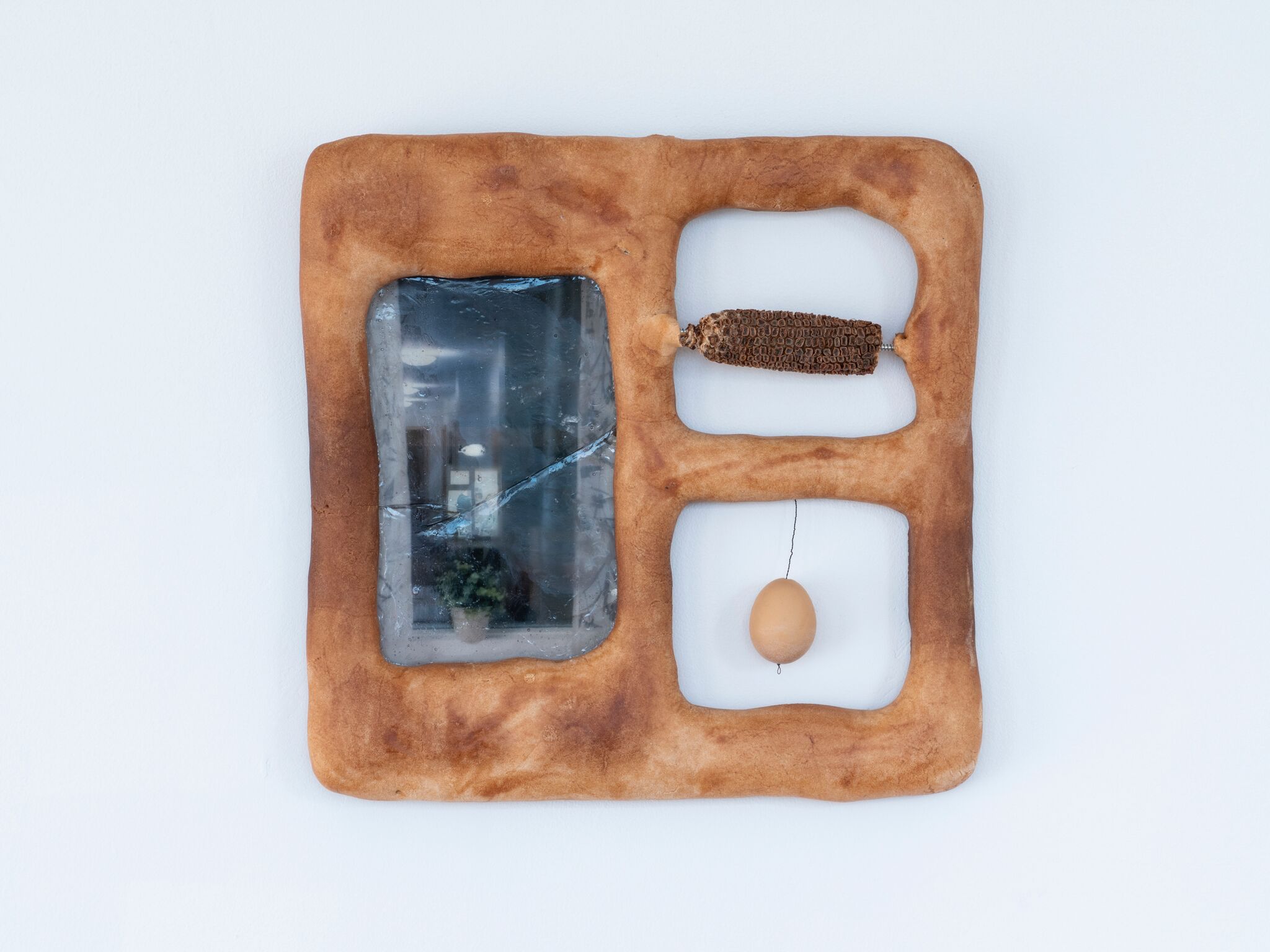 Cheap is Life, 2018
Cheap is Life, 2018Isabelle Frances Mcguire
sugar, dead dough, egg, corn and wire
16 x 16 in
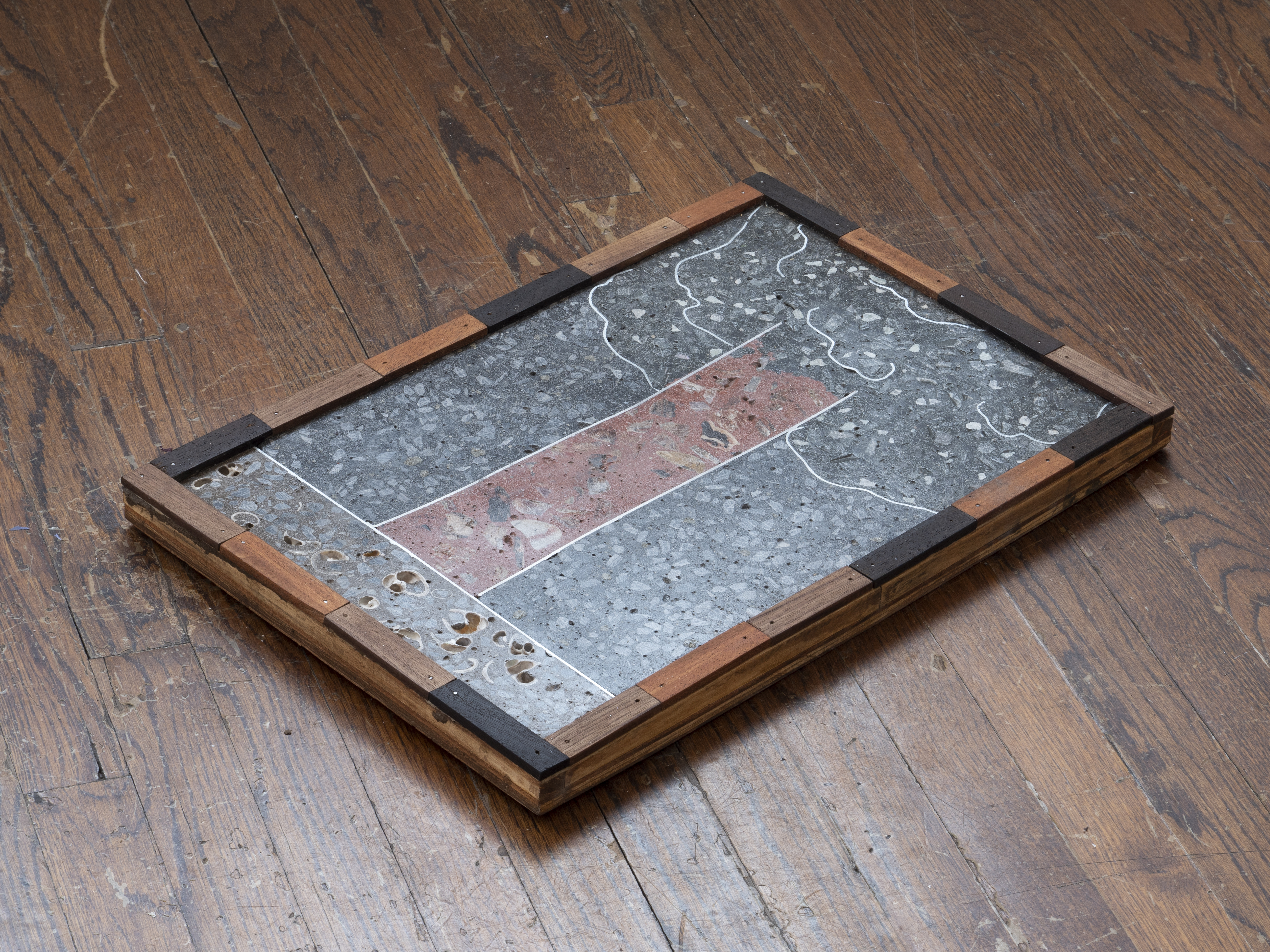 Redwood at Night (title by Frank Traynor), 2018
Redwood at Night (title by Frank Traynor), 2018Ficus Interfaith
Wood, cement, marble, seashells, petrified wood
13.5 x 20.5 in
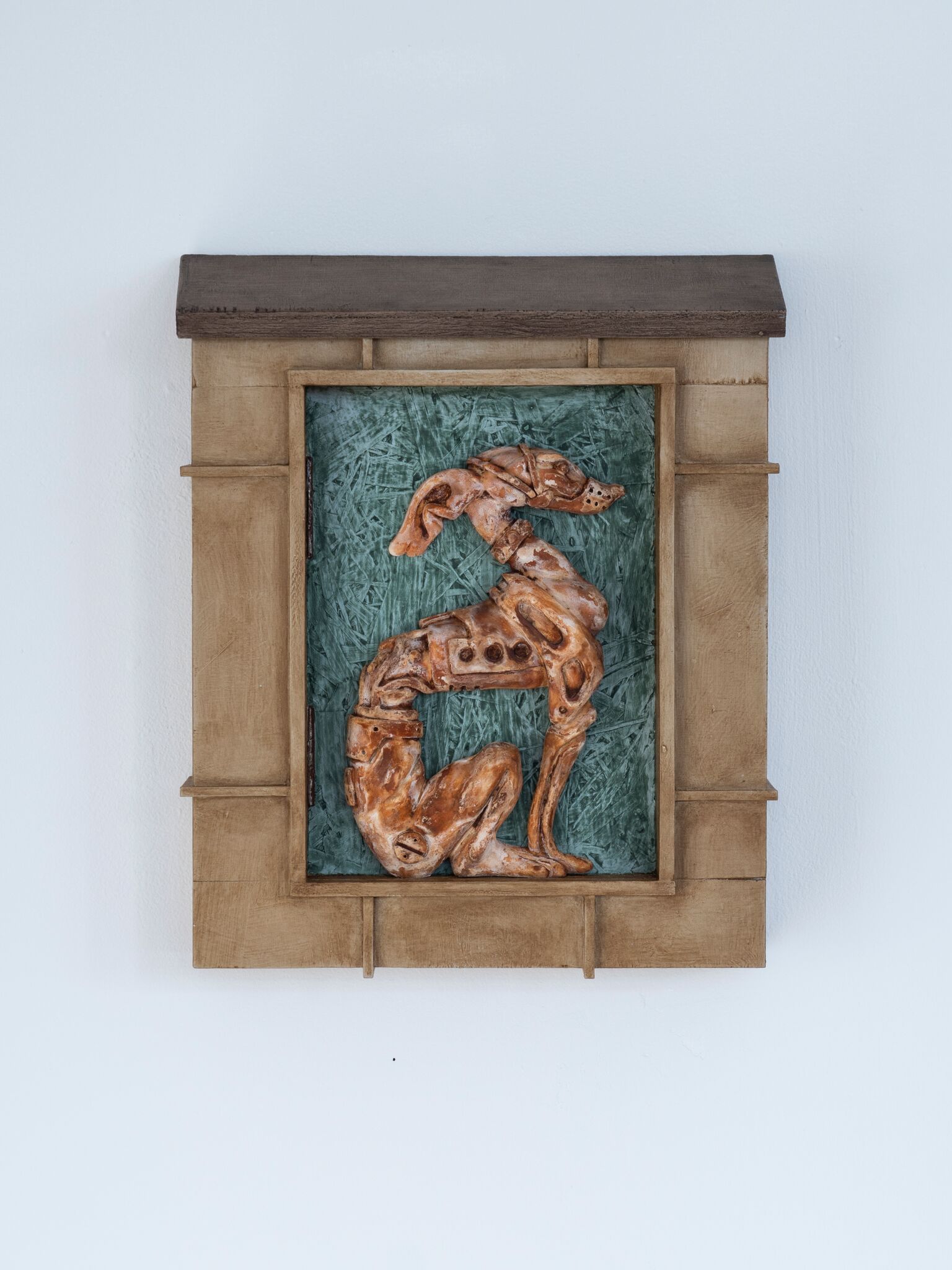 slow utterance (grighund), 2018
slow utterance (grighund), 2018Adam Shiu-Yang Shaw
Wood, plaster, latex paint, aqueous pigments, iron, sodium
13 x 11 x 3 in
 The Last Judgement, 2016
The Last Judgement, 2016Fin Simonetti
Pen on paper, custom frame
30 x 20 in
 All Whores are Jacobites, 2017
All Whores are Jacobites, 2017Georgia Horgan
CAD embroidered cotton velvet, lecture chairs, linen-mix trim
Dimensions variable
 No Species, 2018
No Species, 2018Loney Abrams and Johnny Stanish
Resin, silicon, plastic, human hair
28 x 16 x 10 in
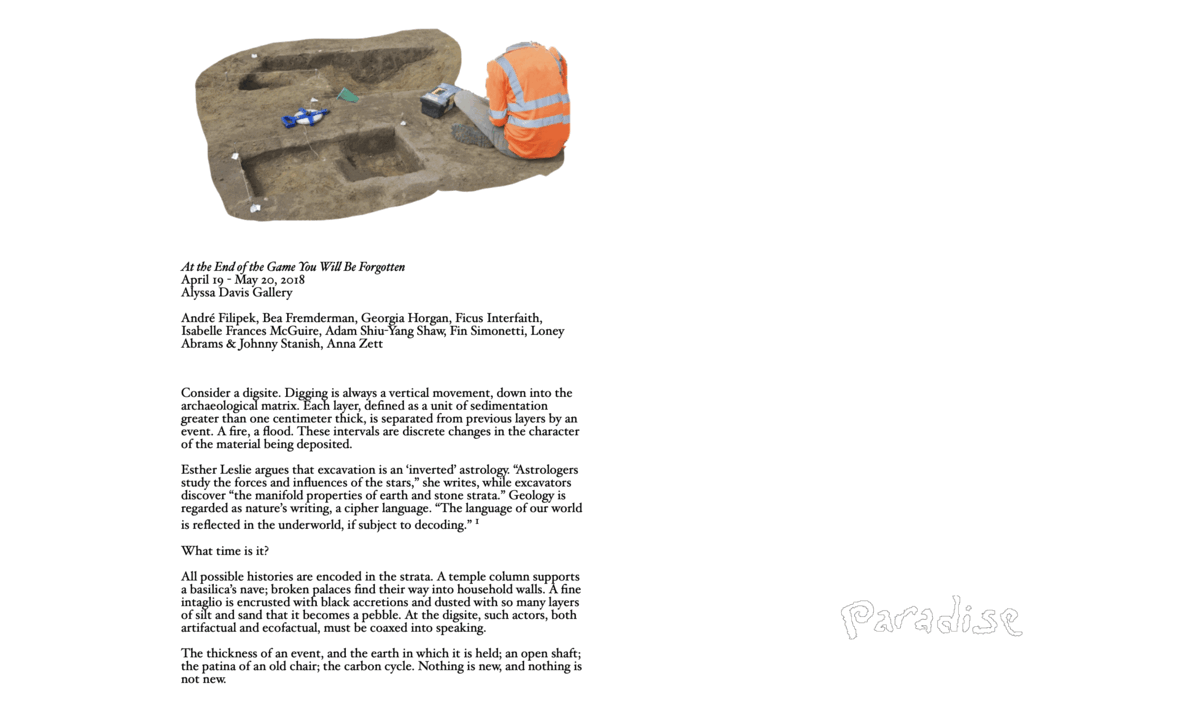
At the End of the Game You Will Be Forgotten Research:
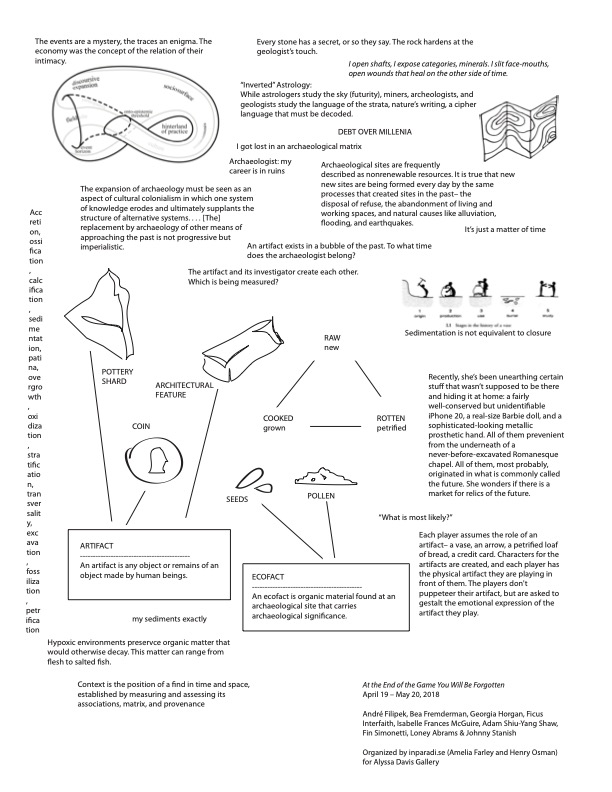
The events are a mystery, the traces an enigma. The economy was the concept of their relation and their intimacy.
I open shafts, I expose categories, minerals. I slit face-mouths, open wounds that heal on the other side of time, wrote Aase Berg.
Ovid skirts over Phantasos in his Metamorphoses, favoring Morpheus over him and leaving the god only two sentences, a mythology condensed. Phantasos, Ovid claims, “wears the cheating shapes of earth, rocks, water, trees--inanimate things. To kings and chieftains these at night display their phantom features; other dreams will roam among the people, haunting common folk.” What do I see when I see? Who do I feel when I feel? (Metamorphoses [8 A.D.])
"There was earth inside them, and / they dug."
— Paul Celan, There Was Earth Inside Them (1959)
"The hermit tells the old miner amongst the party that he and his mining brothers are ‘well nigh inverted astrologers’: as they ceaselessly regard the sky, wandering through its immeasurable spaces, so do you turn your gaze to the earth, exploring its construction. Astrologers study the forces and influences of the stars, while you are discovering the forces of rocks and mountains and the manifold properties of earth and stone strata. To them the higher world is a book of futurity; to you the earth is a memorial of the primeval world. Inside the cave, the past is revealed in the present, for the ancient action of water, heat, animal and plant decomposition has formed rock and coal and gemstones. ‘Inverted astrology’ reveals truths about nature’s past. Indeed geology was seen as a cipher language, a type of writing. Nature’s writing compares with human writing, and the language of our world is reflected in the underworld, if subject to decoding."
—"Substance and Philosophy, Coal and Poetry" from Synthetic Worlds: Nature, Art and the Chemical Industry by Esther Leslie
"The investigators’ forensic analyses take them back and forth across the
surface of the earth, to interrogate protagonists and suspects not limited to
human beings but also including built structures and synthetic objects which
must be coaxed into ‘speaking’."
— Robin Mackay, The Barker Topos
"Context in archaeology can be defined in a number of ways:
1. A generic term for the smallest identifiable stratigraphic unit recognized in an
excavation.
2. The position of an archaeological find in time and space established by
measuring and assessing its associations, matrix and provenance.
3. The physical and cultural circumstances surrounding the deposition of
archaeological material and the formation of archaeological deposits"
Between The Field and The Museum
— Alice Stevenson
"The expansion of archaeology must be seen as an aspect of cultural colonialism in which one system of knowledge erodes and ultimately supplants the structure of alternative systems. . . . [The] replacement by archaeology of other means of approaching the past is not progressive but imperialistic."
Toward a Postcolonial Archaeology of Indigenous Australia
— Alex Bentley
"Archaeological resources are frequently
described as nonrenewable resources. It is true that
new archaeological sites are being formed every day
by the same processes that created sites in the past-the
disposal of refuse, the abandonment of living and working
spaces, and natural causes like alluviation, flooding,
and earthquakes."
Looting, Collecting, and the Destruction of Archaeological Resources
— Ricardo J. Elia
"Both are professionally concerned with the past.
She’s an archaeologist: She unearths eerie things, such as the big tin bird with golden eyes hypothetically intended for astronomic calculations that, since exhibited in the almost-empty local museum, has encouraged a kind of weird cult: people killing birds—crows, lost seagulls, jays, sparrows—and hanging their corpses from street lamps.
He’s a historian, he works with texts instead of mud, he knows the past is just a lie that’s been around for enough time to be used as foundation for future falsity.
Recently, she’s been unearthing certain stuff that wasn’t supposed to be there and hiding it at home: a fairly well-conserved but unidentifiable iPhone 20, a real-size Barbie doll, and a sophisticated-looking metallic prosthetic hand. All of them prevenient from the underneath of a never-before-excavated Romanesque chapel. All of them, most probably, originated in what is commonly called the future.
She wonders if there is a market for relics of the future."
— Germán Sierra, Cloudwall
Vitruvius argued that in grotesque wall paintings, “Instead of columns, there rise up stalks; instead of pediments, curled leaves and the tendrils of plants. Likewise, candelabra hold up images of aediculae; on their summits, clusters of thick stalks rise from their roots in tendrils with little figures seated upon them at random. In the same fashion, slender stalks with heads of men and of animals attached to half the body. Such things neither are, nor can be, nor have been.”
— Marcus Vitruvius Pollio, De Architectura (27 B.C.), trans. and ed. Frank Granger (Cambridge: Harvard University Press, Loeb Classical Library, 1934), 2:105.
“There is no absolute boundary between here-now and there-then. There is nothing that is new; there is nothing that is not new. Matter itself is diffracted, dispersed, threaded through with materializing and sedimented effects of iterative reconfigurings of spacetimemattering, traces of what might yet (have) happen(ed). Matter is a sedimented intra-acting, an open field. Sedimenting does not entail closure. (Mountain ranges in their liveliness attest to this fact.)”
— Karen Barad, Diffracting Diffraction: Cutting Together-Apart
Describing the 2010 black box chamberlarp Falne stjerner (Fallen Stars), Hanne Grasmo writes: "As an old artifact from a flea market you will at the end of the game be forgotten."
— Hanne Grasmo, Larp and I––Till Death Do Us Part
Once Upon A Nordic LARP: 20 Years of Playing Stories, ed. Martine Svanevik, Linn Carin Andreassen, Simon Brind,
Elin Nilsen, and Grethe Sofie Bulterud Strand; designed by Casey Gollan, Victoria Sobel, and Owen Law
Falne stjerner (Fallen Stars)
Martin Nielsen, Vilde Herning, Magnar Grønvik Müller, Linn Eik Pilskog, and Nils Hiorth
Paleopetrology: From Gog-Magog Axis to Petropunkism
— Reza Negarestani
Speleological Interiority – The Mindfulness of a Spelunking Anatomist
— Catherine Clinger


